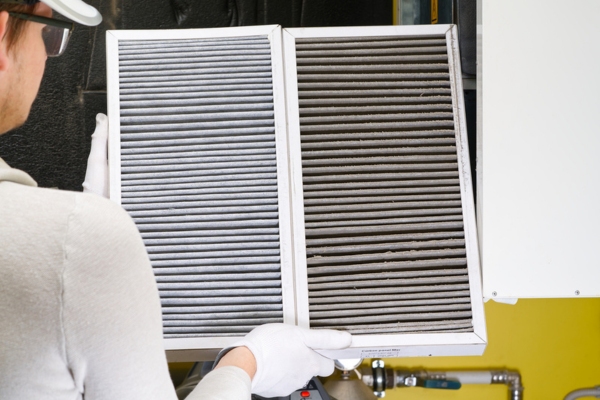MERV vs MPR: Your Air Filter Checkup Guide to Ratings
If you or someone in your home is experiencing allergy symptoms, it might be a good time for an air filter checkup. A dirty air filter is the top reason for HVAC system failure because it restricts air flow which puts extra strain on your system – causing it to overheat and ultimately fail. But a dirty air filter doesn’t just make your motor work harder and use more energy, it can also reduce the air quality in your home.
In any New Jersey home that has central air conditioning, air is recycled several times an hour. The air is pulled into the HVAC unit through an air filter before it is cooled in the summer (or heated in the winter), then it is pushed back into your home through the ducts. The filter plays a key role in removing dust and allergens. If the air filter isn’t effective, allergies, asthma and other respiratory health problems could be aggravated.
MERV vs MRP
Contents
Before we dive into prevention, it’s important to understand your air filter rating system.
MERV = Minimum Efficiency Reporting Value
Regulated by standards set by ASHRAE (the American Society of Heating, Refrigerating, and Air conditioning Engineers), every filter contains a MERV rating. This is the only nationally regulated, independent rating system for air filters.
MERV ratings range from 1-16, and the rating is designed to measure the worst-case performance of a rated air filter on particles in the size range of .3 to 10 microns. The higher a MERV rating, the higher percentage of a particles removed from the air.
MPR = Microparticle Performance Rating
The MPR system of ratings was created by and is only used by 3M. Only filters under the 3M brand contain an MPR rating. The measurements are similar to MERV.
Reduce Allergens with an Air Filter Checkup and More!

Dealing with allergies in the home may seem like a tough task but thankfully there are a few simple things you can do to help improve your (and your home’s) health.
1. Replace HVAC Filter Monthly
An air filter checkup is one of the simplest changes you can make to fight against allergens and improve the lifespan of your system. Look for a model that is specifically designed to capture microscopic particulates, including pollen, bacteria, and mold spores. For example, pleated filters may increase the amount of surface area where particles can be captured electrostatically.
2. Maintain Humidity Levels
Maintain humidity levels in your house at around 50 percent. Since mold likes moisture, and dust and pollen are easily stirred in dry air, a balance is important. Pay special attention to bathrooms, the kitchen and the basement first.
3. Close Windows at High Counts
Close windows when pollen counts are highest. This typically includes during the hours from 10 a.m. to 3 p.m., and on windy days.
4. Wash Up
Pollen and mold spores can settle on clothing and on hair, so when you or your children come in from being outside, remove and wash clothing and take a shower.
5. Clear the Clutter
The less stuff you have in your house, the fewer places for allergens to linger… And the easier it will be to do a weekly cleaning.
6. Use a HEPA Filter on Your Vacuum
Vacuuming twice a week is the easiest, most effective way to control irritating dust in your home. But to maximize the effectiveness of your vacuum, use one with a high-efficiency particulate air (HEPA) filter. HEPA filters are designed to trap 99.97% of the particles (.3 microns and larger) in your home such as pet dander, dust or pollen.
Lawes Home Comfort Specialists
Since poor home air quality can increase allergy and asthma symptoms, particularly children’s allergies, it’s important to change your filter for your family’s health. As a family owned business, we at Lawes Company know there’s nothing more important than the safety and comfort of your family.
Give us a call at 732-741-6300 to schedule maintenance or repairs for your HVAC system; we’re available 24/7 for emergency service.
Contact us now at (732) 741-6300 to find out more! Click the link to view our service area.
